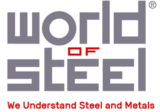Sheet Features for High Speed Can Making Line
Sheet Features for High Speed Can Making Line
Squareness and camber
The modern, high-speed machines used in manufacturing containers demand precise sheet registration to ensure accuracy. Therefore, it is important to ensure rectilinearity of the tinplate sheets to within precise tolerance. Two parameters, which are customarily specified, are “out-of-squareness” and camber.
“Out-of-squareness” is defined as the deviation of an edge from a straight line drawn at a right angle to the other edge of the sheet, touching one corner and extending to the opposite edge. It is normally expressed as a percentage
deviation × 100%
____________________
length of perpendicular
or as a maximum linear value for any edge measurement.
Camber is defined as the maximum deviation of a sheet edge from a straight line touching both corners and forming a chord to the edge. Camber is measured in the plane of the sheet and is a measure of the straightness of the edge. It should not be confused with bow, which describes the flatness of the sheet. Camber may be expressed as a percentage
deviation × 100%
________________
length of chord
or as a maximum deviation for a given length of sheet edge.
Other sheet features
- Edge wave
This is an intermittent vertical displacement occurring at the sheet edge when the sheet is laid on a flat surface. Centre buckle or full centre, is an intermittent vertical displacement or wave in the sheet occurring other than at the edges.
- Longitudinal bow or line bow
This is the residual curvature in the sheet remaining along the direction of rolling.
- Transverse bow or cross bow
Is a mode of curvature in the sheet such that the distance between the edges parallel to the rolling direction is less than the sheet width.
There is another feature, which can arise when the strip is cut into sheets:
- Burr
This can occur at the extreme edges of the sheet and is caused by shearing action. It is described as “metal displaced beyond the plane of the surface of the sheet”.
- Thickness variations
Whilst every endeavour is made to produce material of uniform cross-section, small variations occur in the thickness of the sheet, across the rolling width.
- Crown
Is defined as the difference in thickness between the centre and edge of the strip. In practice, it is measured at the centre and at a point near the edges, but not within 10 mm of the edge. The thickness may be measured by micrometer or by weighing samples cut from the sheet at appropriate locations. Usually the maximum deviation in thickness between centre and edge is specified as 5% of the average sheet thickness.
At the extreme edges of the rolled strip the thickness may be sharply reduced. This is known as “feather edge” or as “transverse thickness profile”. It is of importance to the canmaker, especially when using double-reduced tinplate.
- Feather edge
is defined as the reduction in sheet thickness at right angles to the rolling direction, close to the edge. It is measured at a location 6 mm from the mill trimmed edge of the sheet. The usual tolerance permitted for this extreme edge variation is a maximum of 6% compared to the actual centre thickness of the sheet being measured.
The thickness of tinplate may be determined by micrometer, but more usually in standards the thickness is calculated by weighing specimens statistically sampled from a consignment at stipulated points.
The tolerance on thickness is specified in national and international standards. The actual value depends on the amount of material involved. For example, the international standard (ISO 11949) specifies for a single sheet a tolerance of + 8.5% determined by weighing, whereas for a consignment the thickness tolerance varies from + 4% averaged over 20,000 sheets or less (15,000 m) or + 2.5% averaged over a consignment in excess of 20,000 sheets (15,000 m).
Tighter tolerances, for specific end uses, may occasionally be negotiated between supplier and purchaser.
- Source: The International Tin Association (formerly ITRI Ltd)
